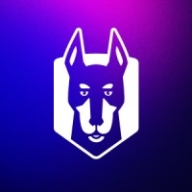

IBM Application Performance Management and Snyk cater to different aspects within the tech ecosystem—application performance optimization and security in development, respectively. Snyk holds a competitive edge due to its advanced security features, despite IBM’s cost-effectiveness.
Features: IBM Application Performance Management provides robust monitoring, diagnostic tools, and analytics, essential for performance optimization. It includes the transaction tracking feature for comprehensive insight, data integration capabilities, and is based on cognitive analytics. Snyk specializes in security vulnerabilities detection, automated fixes, and integrations with CI/CD pipelines. Its robust vulnerability database, comprehensive integrations, and container security features are strengths that enhance developer security ownership.
Room for Improvement: IBM could improve by making deployment less complex and simplifying user interfaces to be more intuitive. More integrations with modern CI/CD tools could also enhance its offering. Snyk has room to expand its feature set with additional vulnerability insights and further enhance its licensing compliance handling. Expanding its monitoring capabilities to include more platforms could also strengthen its position.
Ease of Deployment and Customer Service: IBM's deployment process is complex but is supported by reliable customer service. Snyk, in contrast, is known for easy and straightforward integration with existing systems, paired with responsive customer support, providing a hassle-free experience for users.
Pricing and ROI: IBM generally requires a significant initial investment but yields a strong ROI with its performance optimization features. Snyk, while sometimes involving higher upfront costs, offers substantial long-term value through its security offerings and integration benefits, emphasizing operational security.
| Product | Market Share (%) |
|---|---|
| Snyk | 0.3% |
| IBM Application Performance Management | 0.5% |
| Other | 99.2% |


| Company Size | Count |
|---|---|
| Small Business | 6 |
| Midsize Enterprise | 1 |
| Large Enterprise | 2 |
| Company Size | Count |
|---|---|
| Small Business | 20 |
| Midsize Enterprise | 9 |
| Large Enterprise | 21 |
Snyk excels in integrating security within the development lifecycle, providing teams with an AI Trust Platform that combines speed with security efficiency, ensuring robust AI application development.
Snyk empowers developers with AI-ready engines offering broad coverage, accuracy, and speed essential for modern development. With AI-powered visibility and security, Snyk allows proactive threat prevention and swift threat remediation. The platform supports shifts toward LLM engineering and AI code analysis, enhancing security and development productivity. Snyk collaborates with GenAI coding assistants for improved productivity and AI application threat management. Platform extensibility supports evolving standards with API access and native integrations, ensuring comprehensive and seamless security embedding in development tools.
What are Snyk's standout features?Industries leverage Snyk for security in CI/CD pipelines by automating checks for dependency vulnerabilities and managing open-source licenses. Its Docker and Kubernetes scanning capabilities enhance container security, supporting a proactive security approach. Integrations with platforms like GitHub and Azure DevOps optimize implementation across diverse software environments.
We monitor all Application Performance Monitoring (APM) and Observability reviews to prevent fraudulent reviews and keep review quality high. We do not post reviews by company employees or direct competitors. We validate each review for authenticity via cross-reference with LinkedIn, and personal follow-up with the reviewer when necessary.